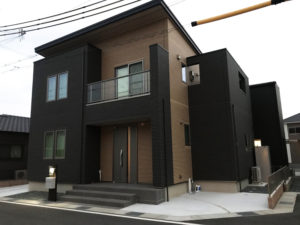What is the purpose of the mission of the Building Standards Law?
The Building Standards Law (建築基準法)was created for the MLIT to provide basic rules for construction during a building and the stipulates minimum engineering safety requirements concerning fire earthquake and other natural disasters.
It also stipulates the types of buildings we can build according to each zoning district(用途地域)
under the city planning law.
A building not contracted to meet this requirement is regarded as an illegal building however a building previously constructed in compliance with a standard existing at the time of the construction but which no longer meet current construction standards is not considered as an illegal building but rather called non-conforming building. (既存不適格)
*
When you find the cheap property, please make sure if it is a non-conforming building or not. It is not a fatal mistake to buy such a property, but you have to understand what you are running into beforehand.
What is the procedure for constructing a building in Japan?
Before any construction begins building permission must be received from relevant local government or a designated confirmation and inspection body which is the private sector.
These procedures make sure the building is constructed and compliance with the Building Standards Law.
Upon completion of the building In compliance with the law receives a building inspection certificate which provides legal documentation that
the building meets or exceeds requirements as stipulated in the law.
*
Having building inspection certificate in your hand is very helpful when you sell your property in the future.
The certificate will provide a more sense of peace of mind with your buyer.
What is the building the coverage ratio (建ぺい率)and the floor area ratio(容積率)?
The law also governs the building coverage ratio and the floor area ratio of a new building based on the twelve Zone District requirements.
The building coverage ratio is the allowable area of land that the building will sit on.
While the ratio is residential specialized district is lower to provide a higher standard of living, the ratio in commercial specialized district is higher.
The floor area ratio is a building’s total size concerning the land size.
Usually, in Japan, this refers to how high you can build based on the size of the land in which the buildings sit.
*
Both the coverage ratio (建ぺい率)and the floor area ratio(容積率) are a very meaningful concept to know.
Each lot has a specific ratio and the ratio could affect your architect’s plan.
Other Helpful Articles
Buying a very affordable condominium in Japan ?: Do the due diligence
Essentials: How is the real estate ownership registered in Japan?
Toshihiko Yamamoto
Real estate investing consultant and author.
Founder of Yamamoto Property Advisory in Tokyo.
International property Investment consultant and licensed
real estate broker (Japan).
He serves the foreign companies and individuals to buy and sell
the real estates in Japan as well as own homes.
He holds a Bachelor’s degree in Economics from
Osaka Prefecture University in Japan
and an MBA from Bond University in Australia
Toshihiko’s book, “The Savvy Foreign Investor’s Guide to Japanese Properties: How to Expertly Buy, Manage and Sell Real Estate in Japan”is now out on Amazon, iBooks (iTunes, Apple) and Google Play.
About the book
Amazon.com Link




